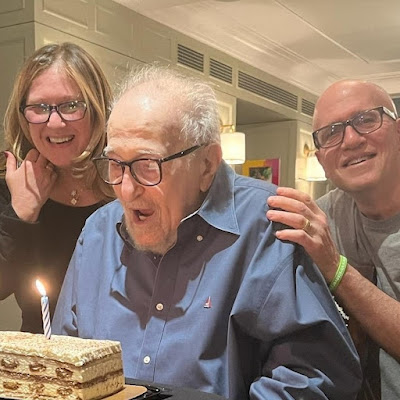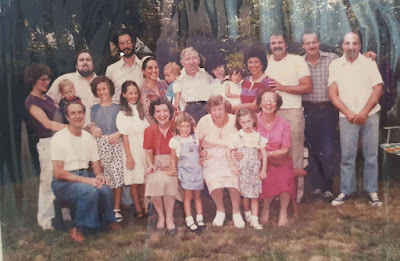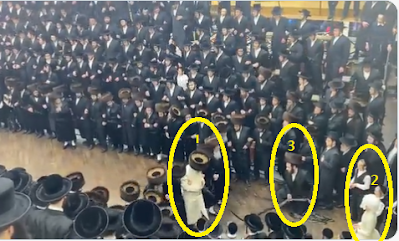See my previous post on the book, "The Pilgrimage of Arnold von Harff / Knight / from Cologne, through Italy, Syria, Egypt, Arabia, Ethiopia, Nubia, Palestine, Turkey, France and Spain, which he Accomplished in the years 1496-1499
Starting on page 207.
we came to the Temple of Solomon® which stands one hundred and sixty paces from the temple of Christ. Item, by means of gifts and other friendly help, I was taken by a Mameluke into this temple. But no Christian or Jew is suffered to enter there or draw near, since they say and maintain that we are base dogs, and not worthy to go to the holy places on pain of death, at which I was frightened. But this Mameluke instructed me that if I would go with him one evening, dressed in his manner, he would take me into the Temple, and that if I was recognised I was to reply like a heathen with the words and speech, and to use the words and make the signs which I was forced to use when it happened that I was imprisoned at Gazera, as I have related above, ^ whereupon the heathen would show me honour and suffer me to go, as indeed happened. Item the Mameluke fetched me one evening from the monastery at Mt. Sion and took me to his house, in pretence that I should have spent the night -with him, where he dressed me in the clothes and apparelled me like a Mameluke. Thus we both made our way at evening towards the Temple of Solomon which, by his direction, was opened and forthwith closed so that we should not be crowded: for this I had to give four ducats.
Item this Temple of Solomon is a fine round and lofty church roofed with lead. Around it is a churchyard, without buildings, which is all paved with large white marble stones, as it is also within. I measured the inside of the church. In length it is seventy-two paces and fifty wide. In the Temple there are thirty-two fine marble pillars, which support the vaulting of the church. In this Temple, eastwards, is a small round tabernacle or chapel five feet long and broad, placed on twelve pillars, a spear’s height from the ground, in which the heathen priests now pray and hold their services. It is held in great reverence and regarded as a holy place, and many ampullae burn there continually. Formerly the Jews held this tabernacle or chapel in great honour and reverence, and regarded it as a holy place, for on it stood the Ark of God, in which was their holy treasure, namely the two tables which Almighty God gave to Moses on Mt. Oreb, on which were written the Ten Commandments, also Aaron’s rod. Therein lay also the written word of God, also the rod with which Moses smote the Red Sea and it was divided, with many other holy things, which the Jews held in great reverence before the birth of Christ. Item beneath this tabernacle is a small piece of rock enclosed with an iron railing, called the holy rock,^ on which many wonders and miracles of God have been performed, for instance Melchisedek, the Priest, offered on this rock wine and bread to the God in Heaven. Also Jacob, the Patriarch, lay sleeping with his head on this rock, and saw a ladder set up from this rock to heaven, upon which the angels of God ascended and descended. When he awoke he said: ‘surely this is a holy place, and I knew it not.’ On this rock King David saw an angel standing with an outstretched naked sword. Further the Jewish priests made their sacrifices to God on this rock. Our Lord Jesus also wrought many miracles on this rock, which the Mameluke could not declare to me. The heathen hold this rock in great reverence, and have very many lamps burning there.
Item on the left in this Temple there is an altar almost like ours, for it is open on all sides. Here formerly the Jews made their sacrifices, offering doves, hens and turtle-doves to God in heaven. But the heathen have now set a compass [dial] on the rock so that by it, in their manner, they may know the hours. Beside this altar Zacharias was slain.
Item this Temple of Solomon has four doors by which one may enter. The doors are all made of ancient cypress wood and are carved with ancient histories. Item by the door, to the north, is a square cistern in which the heathen wash the members with which they have sinned by day or night, thinking to cleanse themselves daily by washing, and they do this before they pray, thinking that otherwise their prayers would not be acceptable to God in heaven. This is the cistern or fountain mentioned in the holy writ, wherein it is said ‘I saw the water go in and out’ . Item I saw in this Temple no pictures or figures, as we have in our Churches, but it is a beautiful Temple with many lamps burning, at least five hundred, as I was in fact told and saw with my eyes. Item in this Temple of Solomon our Lord Jesus preached often to the Hebrews, and taught and wrought many miracles there. Here also he drove out the buyers and sellers because they did not observe the Sabbath. Item this is where our Lord Jesus was tempted of the devil and suffered himself to be carried to the summit of Solomon’s Temple. Here also the Jews threw down St. James the Less from the summit of the Temple to his death.
Item from this Temple, southwards, we came from here to the courtyard of the Temple, through a door called by us Christians Porta Speciosa,^ through which St. Peter and St. John passed when St. Peter healed the lame man, as is told in the Evangelium. Item we went from this Temple eastwards, some twenty-six paces, into a very fine mosque or church called Porticos Salomonis.^ When the Christians possessed Jerusalem it was called the Church of Our Blessed Lady, where for a long time she went to school.
Item this church, Porticus Salomonis, is much longer than the temple of Solomon. It is finely built and roofed with lead, and has within it forty-two marble pillars and eight hundred lamps, which bum there daily. Since the heathen have this church in great reverence, no Christian or Jew may approach it.
Item at the end of this church we went down a great staircase into a vault, which was a stable of the Sultan or the Mamelukes, with accommodation for some six hundred horses.® Since the church is wholly vaulted below we could see well, from its appearance, that in Christian times it was a crypt in which Mass was celebrated, as can be seen from the many altars which are still there. Item we went from this crypt into a beautiful little mosque or church, which is built quite close to the church Porticus Salomonis. This was built by the old Sultan Kathubee, who died five years ago and is honourably buried there. A hundred lamps bum there daily
Item from this church we went some thirty paces to the right hand, westwards, across this fine courtyard which is paved with marble, fifteen paces from the temple of Solomon. We came then to the Golden Door® through which our Lord Jesus rode in on Palm Simday, sitting on an ass. This gate is of cypress wood covered with copper, and is much cut and mutilated. Therefore the heathen guard the doorway closely, so that no Christian may approach it. They have also their cemetery outside the gate towards the Vale of Jehoshaphat, where they bury their dead. Therefore they guard the gate closely against Christians and Jews, whom they regard as more filthy than dogs, lest they should tread on their graves. We broke and cut off many pieces of the wood and copper which I carried back with me. At this gate there is plenary absolution from all sins, both penalty and guilt.
Item we went from this Golden Gate, westwards, from the courtyard of Solomon’s temple, and came to a pool of standing water, called Probatica Piscina,® where our Lord Jesus worked many miracles. No Christian or Jew may approach it except by secret help.
Item we went westwards and came to St. Anne’s House,* which the Christians in former times made into a beautiful church, but now the heathen have turned it into their praying house or mosque, so that the Christians cannot enter, but by means of secret help and gifts we were allowed to go in. We went through the transept, and at the side of the church we climbed through a narrow hole in the arch of a large window, being forced to carry lighted candles so that we could see, and came to a little vault in which St. Anne, the mother of our blessed Lady, departed from this earth. We went then to another vault in which our blessed Lady was born. Here is forgiveness of all sins both penalty and guilt. Item next day the Mameluke took me from the church back to Mt. Sion, and no one knew that I had slept the night at the Mameluke’s house.
The Dome of the Rock was known to medieval travellers as Templum Domini. Most travellers (including Boldensele, p. 261) speak of the lead roof. Von Harff ’s critics have denied the truth of the story of his entry, but he was not the only fifteenth-century traveller to get in. Tafur (p. 61) entered, disguised as a renegade, and describes it as * a single nave, the whole ornamented with gold mosaic work. The floor and walls are of the most beautiful white stones and the place is hung with so many lamps that they all seemed to be joined together’. It was doubtless a dangerous and expensive escapade, but not perhaps as dangerous as was thought. Fabri (ii, p. 257; cp. ii, p. 242 f.) knew a knight who would have got in, if his courage had not failed him at the last moment. Guylforde (p. 44) looked into the vaults through a back door. Cp. Ludolph, p. oB; Casola, pp. Rdhricht-Meisner, p. 30, note i. Mandeville (p. 54) also claims to have entered the Templum Domini, but he had letters under the Sultan’s great seal. There is a long and interesting note in Warner’s edition of Mandeville, p. i8i. The large edifice on liie S. side of the Temple area, called in the Middle Ages indiscriminately Palatium, Porticuscu Templum Salomonis (Robinson, 1, p. 44a), now the Aksa mosque. For a description, see Gabriel von l^ttenberg (1527), Rdhricht-Meisner, p. 406. * On these extensive vaults, see Robinson, i, p. 446. ^ The Madrassa (teaching mosque) el Ashrafiya, which stands on the W. boundary of the Haram enclosure. Vincent & Abel, Jirusalem Nouvelle, PT. IV, 1926, p. 981. But Kait Bey was buried in Cairo. ^ Fabri (i, p. 459) says that the Saracens cut off pieces of the plates and nails and sold them to the Christians, who often risked their lives by going there at night and tearing off little pieces. The relics were said to be proof against apoplexy, falling sickness and plague. ® Casola (p. 248) saw vestiges of the 5 porches mentioned in John v, 2. Many pilgrims drank the water. Casola adds: ‘When I saw the filth I left it alone, it was enough for me to wash my hands there.*
* Guylforde (p. 30) notes that the Saracens suffered none to enter except ‘pryvely or for brybes*. Cp. Rohricht, p. 20, note 248, for references to other pilgrims who got in. Breydenbach (1483-84) carried away portions of the stonework which was believed to be good for pregnant women (26 July). For a description, see De Vogu6, Eglises^ p. 233. It is the best preserved of the crusading edifices.
And here is from the book, The Travels of Sir John Mandeville, a travel memoir which first circulated between 1357 and 1371.
And from the church of the sepulchre, toward the east, at eight score paces, is Templum Domini. It is right a fair house, and it is all round and high, and covered with lead. And it is well paved with white marble. But the Saracens will not suffer no Christian man ne Jews to come therein, for they say that none so foul sinful men should not come in so holy place: but I came in there and in other places there I would, for I had letters of the soldan with his great seal, and commonly other men have but his signet. In the which letters he commanded, of his special grace, to all his subjects, to let me see all the places, and to inform me pleinly all the mysteries of every place, and to conduct p. 55me from city to city, if it were need, and buxomly to receive me and my company, and for to obey to all my requests reasonable if they were not greatly against the royal power and dignity of the soldan or of his law. And to others, that ask him grace, such as have served him, he ne giveth not but his signet, the which they make to be borne before them hanging on a spear. And the folk of the country do great worship and reverence to his signet or seal, and kneel thereto as lowly as we do to Corpus Domini. And yet men do full greater reverence to his letters; for the admiral and all other lords that they be shewed to, before or they receive them, they kneel down; and then they take them and put them on their heads; and after, they kiss them and then they read them, kneeling with great reverence; and then they offer them to do all that the bearer asketh.
And in this Templum Domini were some-time canons regulars, and they had an abbot to whom they were obedient; and in this temple was Charlemagne when that the angel brought him the prepuce of our Lord Jesus Christ of his circumcision; and after, King Charles let bring it to Paris into his chapel, and after that he let bring it to Peyteres, and after that to Chartres.
And ye shall understand, that this is not the temple that Solomon made, for that temple dured not but 1102 year. For Titus, Vespasian’s son, Emperor of Rome, had laid siege about Jerusalem for to discomfit the Jews; for they put our Lord to death, without leave of the emperor. And, when he had won the city, he burnt the temple and beat it down, and all the city, and took the Jews and did them to death—1,100,000; and the others he put in prison and sold them to servage,—thirty for one penny; for they said they bought Jesu for thirty pennies, and he made of them better cheap when he gave thirty for one penny.
And after that time, Julian Apostate, that was emperor, gave leave to the Jews to make the temple of Jerusalem, for he hated Christian men. And yet he was christened, but he forsook his law, and became a renegade. And p. 56when the Jews had made the temple, came an earthquaking, and cast it down (as God would) and destroyed all that they had made.
And after that, Adrian, that was Emperor of Rome, and of the lineage of Troy, made Jerusalem again and the temple in the same manner as Solomon made it. And he would not suffer no Jews to dwell there, but only Christian men. For although it were so that he was not christened, yet he loved Christian men more than any other nation save his own. This emperor let enclose the church of Saint Sepulchre, and walled it within the city; that, before, was without the city, long time before. And he would have changed the name of Jerusalem, and have clept it Aelia; but that name lasted not long.
Also, ye shall understand, that the Saracens do much reverence to that temple, and they say, that that place is right holy. And when they go in they go bare-foot, and kneel many times. And when my fellows and I saw that, when we came in we did off our shoes and came in bare-foot, and thought that we should do as much worship and reverence thereto, as any of the misbelieving men should, and as great compunction in heart to have.
This temple is sixty-four cubits of wideness, and as many in length; and of height it is six score cubits. And it is within, all about, made with pillars of marble. And in the middle place of the temple be many high stages, of fourteen degrees of height, made with good pillars all about: and this place the Jews call Sancta Sanctorum; that is to say, ‘Holy of Hallows.’ And, in that place, cometh no man save only their prelate, that maketh their sacrifice. And the folk stand all about, in diverse stages, after they be of dignity or of worship, so that they all may see the sacrifice. And in that temple be four entries, and the gates be of cypress, well made and curiously dight: and within the east gate our Lord said, ‘Here is Jerusalem.’ And in the north side of that temple, within the gate, there is a well, but it runneth nought, of the which holy writ speaketh of and saith, Vidi aquam egredientem de templo; that is to say, ‘I saw water come out of the temple.’
And on that other side of the temple there is a rock that men clepe Moriach, but after it was clept Bethel, where the ark of God with relics of Jews were wont to be put...
...And from that temple towards the south, right nigh, is the temple of Solomon, that is right fair and well polished. And in that temple dwell the Knights of the Temple that were wont to be clept Templars; and that was the foundation of their order, so that there dwelled knights and in Templo Domini canons regulars.
^














































